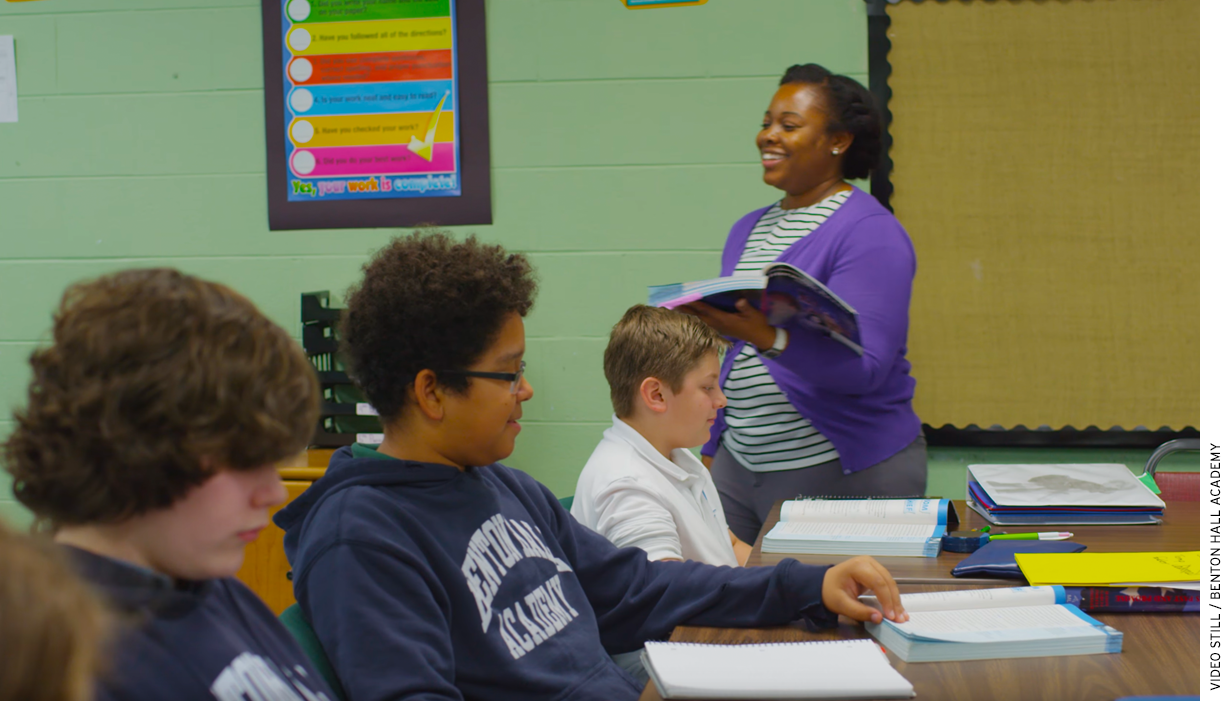
Back when I didn’t know squat, but had energy and naivety to spare, I started a school for students whose learning challenges, depression or anxiety made attendance at a large, comprehensive public high school problematic. They were also students traditional private and parochial schools didn’t want. A combination of 1960s social activism and a Fortune 50 executive father who drilled into me the value of self-employment drove me to borrow $2,000 from Commerce Union Bank, take an ad out in The Tennessean and hang out a shingle.
That was 1977. Jimmy Carter was president, Jimmy Buffett was singing “Margaritaville” and Jimmy Fallon was turning 3. When the school year began, I had one student and no idea what I had stepped into. The Education for all Handicapped Children Act had not been implemented, America was not yet a nation at risk, and alternative education had not been coined as a term of art for what I was doing. When spring came, I had 11 students and 15 signed up for the coming fall. There was no looking back.
Sometimes, being dumber than a post, understanding there’s no way out but through, and believing in patience, kindness and curriculum pays off. Over the last 42 years, the school has lifted the trajectory of several thousand lives, a mere drop in the bucket of alternative education.
Some 650,000 students are enrolled in alternative public school education, according to the National Center for Education Statistics. There is no universal definition of alternative education. It means different things to different school districts. Uses for alternative education vary from short-term discipline to creative paths to graduation to a dumping ground. There’s an association for alternative education that brings teachers together annually to share what’s working in their schools. There are also naysayers like the Southern Poverty Law Center, which sees alternative schools in some Southern states as racist tools. What’s clear, however, is that alternative education, no matter how it is used, has more than a toehold in public education.
For almost four decades, public schooling has been enmeshed in a reform movement. Initially driven by concern that students in other nations were surpassing American school kids’ performance in math and the sciences, reform has staked out as its major themes raising standards, increasing rigor and making a high school diploma more meaningful as an academic achievement. But along with higher expectations have come some unintended consequences.
America’s public high schools enroll just over 15 million students. As rigor has increased, so has the number of students pushed into the “at-risk” category. Generally these students are overage, undercredited and several years behind in reading and math. Many have adult responsibilities, like children, siblings or parents for whom they care. Many hold jobs to help support their family. Some fight addiction. Others struggle with abuse, hunger, homelessness or exploitation. At-risk students are the clients of alternative education.
It’s a reasonable estimation that at least 15 percent of our high school kids are at risk. That’s over 2 million lives. Not all at-risk students are in alternative education, but all alternative education students are at risk. Shorter school days, lower student-to-teacher ratios, credit recovery, attendance incentives, job training and mentoring are components of many successful alternative education programs. Does alternative education cheapen a diploma, or is it unfair to students who stick with the traditional path? I think not.
Almost 1,500 years ago, Benedict of Nursia wrote a simple book containing 73 rules that became the guideline for most Christian monasteries. In his rule, Benedict emphasized the importance of rigor and standards. But he also stressed the importance of exceptions. Give monks what they need to be focused on prayer and work, but make exceptions for the weak, the old and the disadvantaged. Public schools are not based on the Rule of Benedict, but alternative education is an excellent example of its wisdom. Have rigor and high expectations for students, but for those who need something else, provide it.
While rigor and standards are always important, the challenges faced by at-risk students create a rigor of their own. It takes an adult level of determination to finish high school while nursing a baby, fighting addiction or lacking a permanent address. For public school districts to create alternative schools when they are needed is smart. To continually craft those schools for the maximum positive impact on their students is even smarter.
Spring is the high water mark for enrollment in alternative education programs. They generally start with their lowest census in the fall, gain after the first report card and more after the semester change, and peak in spring as students, teachers and parents cling to options that keep graduation hopes alive. High school graduation is a major milestone in our society. Let’s have multiple routes to that milestone, reflecting the complexity of our society and the diversity of the rigors that define the lives of so many high school students.
John M. McLaughlin, Ph.D. is Director or Research & Analytics at ChanceLight Behavioral Health, Therapy, and Education and Founder of Benton Hall Academy in Nashville.


